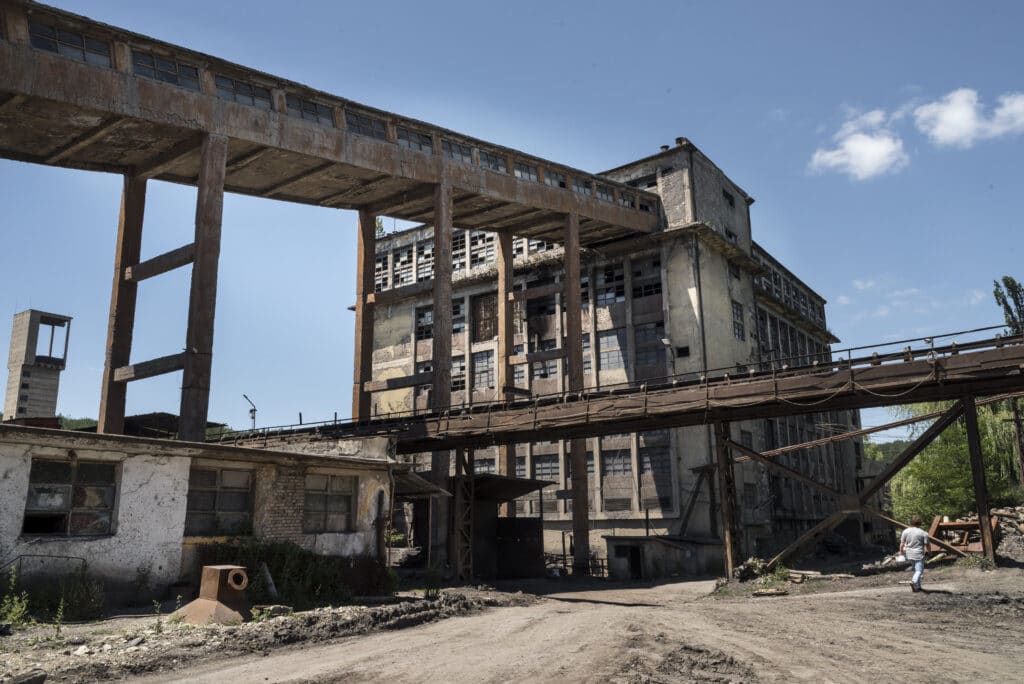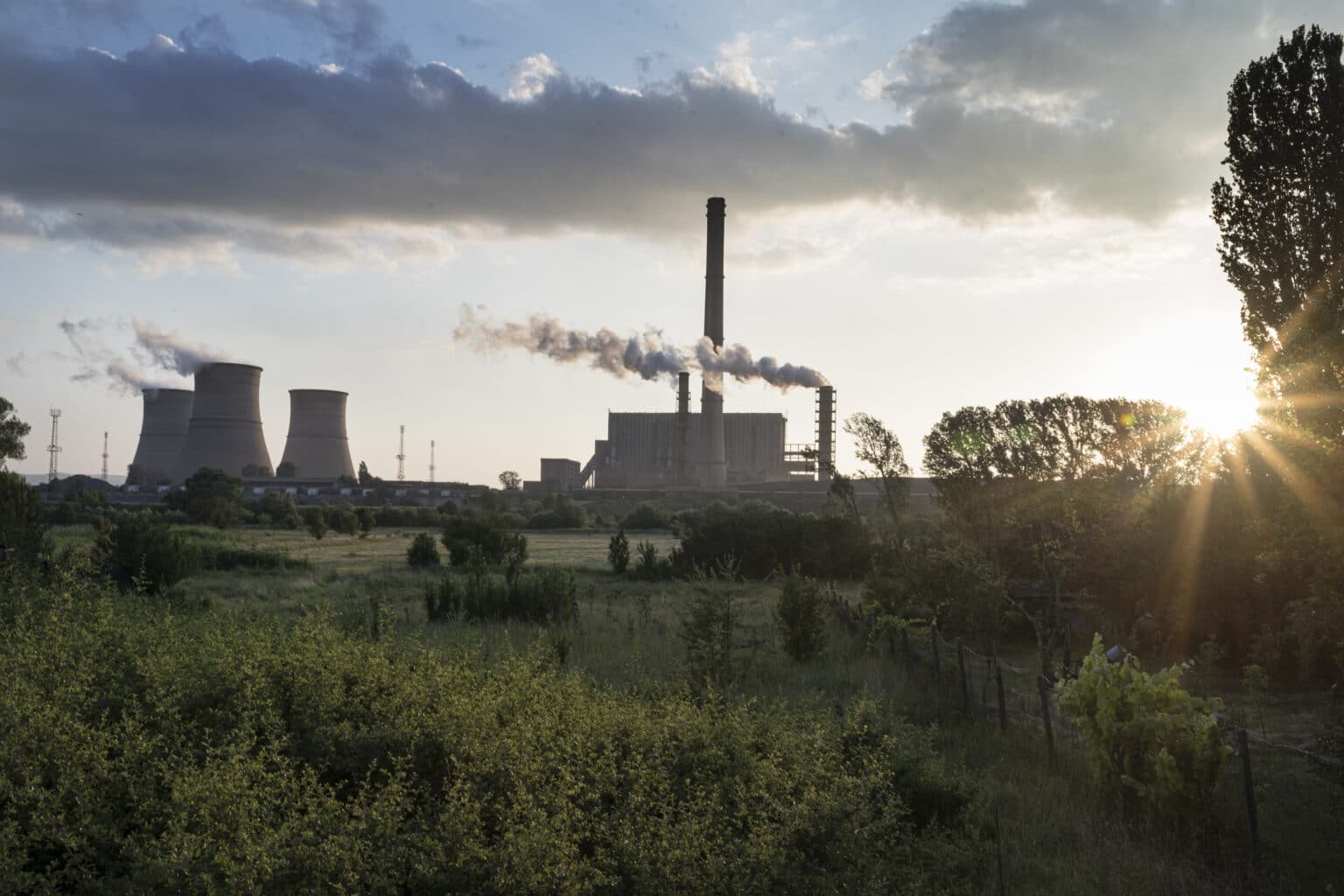By Eleonora Vio and Daniela Sala
The heart of Bobov Dol power plant is a hot, dark, noisy chamber. Lumps of coal litter the floor beside pools of oil and water leaking from decades-old machinery, relics of the Soviet era when workers flocked to build one of Bulgaria’s largest coal-fired facilities.
Based in a major coal-mining district an hour’s drive southwest of Sofia, this facility is one of more than a dozen mines, power plants, and heating companies believed to be controlled by energy tycoon Hristo Kovachki.
As Europe moves toward cleaner forms of energy, many of these assets have become increasingly outdated, inefficient, and mired in debt. Workers say conditions inside the Bobov Dol plant are so bad they fear for their safety, while locals refer to the surrounding town as “Robov Dol,” meaning “city of the exploited people.”
Carbon taxes have further raised the cost of coal-fired facilities operations all over the European Union, but according to revelations by investigative journalism network the Organized Crime and Corruption Reporting Project (OCCRP), Bobov Dol — together with Brikel, another power plant associated with Kovachki — appears to have found a way to overcome this problem and avoid paying millions of Euros.
Under the Emissions Trading System (ETS) all major polluters must submit an annual report declaring how much carbon dioxide they emitted that year. To do that, they use an “emissions factor,” which reflects how much of the greenhouse gas is released by the fuel they burn, then pay for a quota for those emissions.
Smaller plants use the national average emissions factor, but large plants like Bobov Dol and Brikel use figures calculated by accredited laboratories, which in the case of these two plants, are internal to the companies.
Between 2018 and 2020, Bobov Dol burned a mixture of sub-bituminous coal, which the Executive Environmental Agency (EEA) says should have an emissions factor of 96.1, and lignite, which should have a factor of 104.2. But publicly available data show the plant reported a factor below 80 for all three years. In Brikel, which was burning lignite, the emissions factor was given as 90.5 for 2018, 79.5 in 2019, and 76.2 in 2020.
Under-declaring emissions, however, undermines the EU’s ETS. The system was designed to provide an economic incentive for polluters to use greener forms of energy, but it has faced accusations of fraud that have cost taxpayers billions. If polluters are allowed to continue releasing polluting greenhouse gas emissions into the atmosphere without consequence, it risks continuing to warm the planet at a time when experts warn countries must rapidly transition away from fossil fuels.
Peter Seizov, a sustainability expert who is responsible for calculating the overall amount of CO2 emissions produced by the Bulgarian state every year on behalf of EEA, said he excludes the figures from these two plants in the final calculation submitted under the ETS to allocate carbon allowances because they’re so low: “I consider them outliers compared to the default values … to the values reported by other plants in the region, and to values provided by the same plants during past periods.”
By under-declaring their emissions, and based on the annual average ETS carbon price of around €21 per ton in 2019 and €27 in 2020 and 2021, the two plants together may have avoided paying the EU between €26.6 million and €32.2 million.
OCCRP showed Lyubomir Spasov, Bobov Dol’s director, a report confirming the emissions data and signed by his chief engineer. In response, Spasov said: “The report is not ours. It’s from a verification company approved by both national and European institutions.”

In early 2019, when Bobov Dol and Brikel appear to have started under-declaring their carbon emissions, they also changed the company that checked their data, dropping the established verifier Green and Fair in favor of a newly formed company called GMI Verify.
Its owner, Gabriela Milenova Ilieva, was 27 years old at that time and had no background in verifying emissions data. Yet, within five months, she had won contracts to verify emissions from 12 Bulgarian thermal power plants and heating plants linked to Kovachki.
There are many links between GMI Verify and Kovachki. GMI Verify’s headquarters in Sofia are inside the same building as the offices of OZK Zastrahovane, an insurance company controlled by Kovachki through his company LM Impex.
GMI Verify’s attorney, Elena Hristova Dobreva, worked as a manager at Brikel and Maritza 3, another coal-fired plant associated with the tycoon, whose emissions are also checked by the verifier.
OCCRP reporters spent weeks trying to speak to GMI Verify’s employees, but to no avail. Ludmil Valchkovski, who had verified multiple reports from the two plants, simply said: “This data is official. Everything is on the EEA [website]; just look at it.”
As for Hristo Kovachki, he is thought to have been a key beneficiary of the wave of privatizations that stormed the energy sector in the 2000s.
In its 2018 report, Greenpeace said Kovachki’s empire spans more than 150 companies, including eight mines, eight district heating companies, and three power plants. More than a dozen — including Brikel, Bobov Dol and others checked by GMI Verify — were privatized between 2003 and 2008 at low prices and through controversial tender processes.
It is not possible to directly prove that the elusive tycoon still owns the assets, but there are indications they may remain under his control.
“In May 2011 the Commission for Protection of Competition (CPC) took a decision [that] allowed 5 of Kovachki’s companies to be transferred to [the] Seychelles,” Mario Gavrilov, a former spokesman for Bulgaria’s CPC, told OCCRP. “Another 2 companies were transferred a few days later,” he added.
OCCRP found records showing that the ownership of four energy assets associated with Kovachki, including Brikel, were transferred to the Seychelles in 2011 and 2012. The ownership histories of several of the other plants are unclear.
Three years later, Bulgaria passed new laws restricting offshore ownership. That year, control of several of the energy assets linked to Kovachki appear to have been transferred to the U.K. and Cyprus.
Today, Brikel is officially owned by a company belonging to 81-year-old David Fordham, a British man who holds directorships in seven other U.K. companies. Bobov Dol nominally belongs to a British company controlled by Belize citizen Erlene May Rodriguez, an accountant for a financial services company who holds positions in eight U.K.-registered companies.
Neither Rodriguez nor Fordham replied to requests for comment.
Kovachki has never outright denied the media reports both listing him as the owner of the plants and describing him as a consultant for one plant or another.
Evgeni Sokolovski, a consultant with the verifier Green and Fair, suggested that either the EEA or Bulgaria’s Accreditation Service Executive Agency (EA-BAS) could be responsible for approving Bobov Dol and Brikel’s low emissions figures, but added that “they are going to bounce the ball to each other.”
Irena Borislavova, CEO of EA-BAS, at first referred questions to the EEA, but then promised that her organization would look into the matter. It’s unclear whether this has happened.
The EEA’s CEO, Rositsa Karamfilova-Blagova, said the body does not directly check the accuracy of emissions figures, but will accept the data if “the calculations were made in an accredited laboratory and the report is correctly verified.” EA-BAS is responsible for overseeing verification laboratories.
In addition to allowing more climate warming pollution to be released unchecked, false reporting “represents a loss in auctioning revenues from the sale of EU carbon market allowances for the government,” said Sam Van den Plas, from Carbon Market Watch. In 2019, Bulgaria’s total revenue from its greenhouse gas allowance was 439 million euros, which fell to 206 million euros the year after.
Van den Plas added that the European Commission could investigate if the Bulgarian authorities’ actions breach EU laws.
Read OCCRP’s full investigation at their website here.
Subscribe to our newsletter
Stay up to date with DeSmog news and alerts







